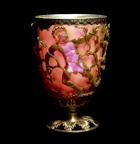Early Examples of Nanostructured Materials
Long before modern science, early craftsmen discovered ways to make nanostructured materials with unique properties. Use of high heat was one common step in the processes they developed to produce these materials.
- 4th Century: The Lycurgus Cup (Rome) is an example of dichroic glass; colloidal gold and silver in the glass allow it to look opaque green when lit from outside but translucent red when light shines through the inside.
| |
| The Lycurgus Cup at the British Museum, lit from the outside (left) and from the inside (right) | The Lycurgus Cup at the British Museum, lit from the outside (top) and from the inside (bottom) |
- 9th–17th Centuries: Glowing, glittering “luster” ceramic glazes used in the Islamic world, and later in Europe, contained silver or copper or other metallic nanoparticles.
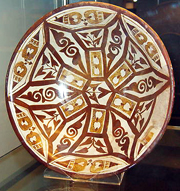 |
| Polychrome lustreware bowl, 9th C, Iraq, British Museum (©Trinitat Pradell 2008) |
- 6th–15th Centuries: Vibrant stained glass windows in European cathedrals owed their rich colors to nanoparticles of gold chloride and other metal oxides and chlorides; gold nanoparticles also acted as photocatalytic air purifiers.
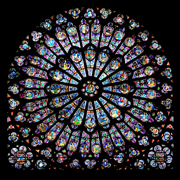 |
| The South rose window of Notre Dame Cathedral, CA 1250 |
- 13th–18th Centuries: “Damascus” saber blades contained carbon nanotubes and cementite nanowires—an ultrahigh-carbon steel formulation that gave them strength, resilience, the ability to hold a keen edge, and a visible moiré pattern in the steel that give the blades their name.

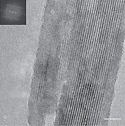
Examples of Discoveries and Developments Enabling Nanotechnology
Nanotechnology has significantly evolved over the years. Here are a handful of examples of discoveries and advances that have enabled nanotechnology over time.
1857
Michael Faraday discovered colloidal “ruby” gold, demonstrating that nanostructured gold under certain lighting conditions produces different-colored solutions.
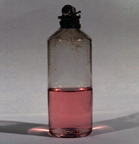 Gold Bulletin 2007 40.4, p. 267
Gold Bulletin 2007 40.4, p. 267
1936
Erwin Müller, working at Siemens Research Laboratory, invented the field emission microscope, allowing near-atomic-resolution images of materials.
1947
John Bardeen, William Shockley, and Walter Brattain at Bell Labs discovered the semiconductor transistor and greatly expanded scientific knowledge of semiconductor interfaces, laying the foundation for electronic devices and the Information Age.
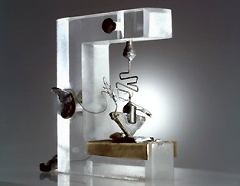 1947 transistor, Bell Labs
1947 transistor, Bell Labs
1950
Victor La Mer and Robert Dinegar developed the theory and a process for growing monodisperse colloidal materials. Controlled ability to fabricate colloids enables myriad industrial uses such as specialized papers, paints, and thin films, even dialysis treatments.
1951
Erwin Müller pioneered the field ion microscope, a means to image the arrangement of atoms at the surface of a sharp metal tip; he first imaged tungsten atoms.
1956
Arthur von Hippel at MIT introduced many concepts of—and coined the term—“molecular engineering” as applied to dielectrics, ferroelectrics, and piezoelectrics.
1958
Jack Kilby of Texas Instruments originated the concept of, designed, and built the first integrated circuit, for which he received the Nobel Prize in 2000.
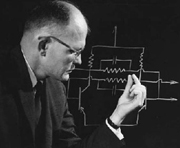 Jack Kilby, about 1960
Jack Kilby, about 1960
1959
Richard Feynman of the California Institute of Technology gave what is considered to be the first lecture on technology and engineering at the atomic scale, "There's Plenty of Room at the Bottom" at an American Physical Society meeting at Caltech.
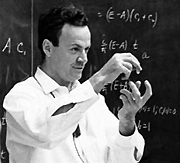 Richard Feynman (Caltech archives)
Richard Feynman (Caltech archives)
1965
Gordon Moore, Intel co-founder, described in Electronics magazine several trends he foresaw in electronics. Known as Moore’s Law, he observed the density of transistors on an integrated chip doubling every 12 months (later 24 months) and predicted ongoing shrinkage in chip sizes with increasing performance.
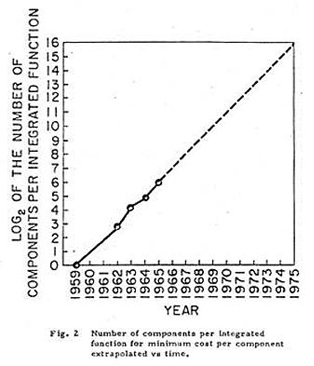 Moore’s first public graph showing his vision of "cramming more components onto integrated circuits"
Moore’s first public graph showing his vision of "cramming more components onto integrated circuits"
1974
Norio Taniguchi of Tokyo Science University coined the term "nanotechnology" to describe precision machining of materials to within atomic-scale dimensional tolerances.
1981
Gerd Binnig and Heinrich Rohrer at IBM's Zurich lab invented the scanning tunneling microscope, allowing scientists to "see" (create direct spatial images of) individual atoms for the first time. Binnig and Rohrer won the Nobel Prize for this discovery in 1986.
1981
Russia's Alexei Ekimov discovered nanocrystalline, semiconducting quantum dots in a glass matrix and conducted pioneering studies of their electronic and optical properties.
1983
Louis Brus (Columbia University) discovered that the properties of colloidal nanoparticles, specifically those made of cadmium sulfide, change as the size of the nanoparticles change.
1985
Rice University researchers Harold Kroto, Sean O’Brien, Robert Curl, and Richard Smalley discovered the Buckminsterfullerene (C60), a molecule resembling a soccer ball composed entirely of carbon. Their work earned the 1996 Nobel Prize in Chemistry.
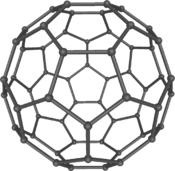 Diagram of the buckyball (C60), a spherical carbon molecule
Diagram of the buckyball (C60), a spherical carbon molecule
1985
Bell Labs’s Louis Brus discovered colloidal semiconductor nanocrystals (quantum dots), for which he later shared the 2008 Kavli Prize in Nanotechnology.
1986
Gerd Binnig, Calvin Quate, and Christoph Gerber invented the atomic force microscope, which has the capability to view, measure, and manipulate materials down to fractions of a nanometer in size.
1989
Don Eigler and Erhard Schweizer at IBM's Almaden Research Center manipulated 35 individual xenon atoms to spell out the IBM logo. This demonstration of the ability to precisely manipulate atoms ushered in the applied use of nanotechnology.
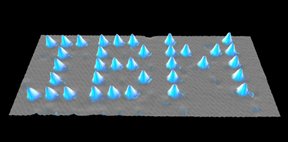 IBM logo spelled using 35 xenon atoms manipulated by a scanning tunneling microscope
IBM logo spelled using 35 xenon atoms manipulated by a scanning tunneling microscope
1991
Sumio Iijima of NEC discovered the carbon nanotube (CNT). CNTs, like buckyballs, are entirely composed of carbon but have a tubular shape. They exhibit extraordinary properties in strength, electrical, and thermal conductivity, among others.
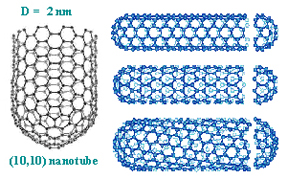
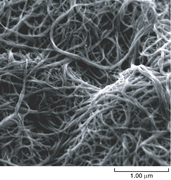
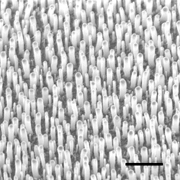 Various images of carbon nanotubes: diagram, SEM micrograph, and aligned array (courtesy: NSF, NASA, Boston College)
Various images of carbon nanotubes: diagram, SEM micrograph, and aligned array (courtesy: NSF, NASA, Boston College)
1992
C.T. Kresge and colleagues at Mobil Oil discovered the nanostructured catalytic materials MCM-41 and MCM-48, now used heavily in refining crude oil as well as for drug delivery, water delivery, water treatment, and other varied applications.
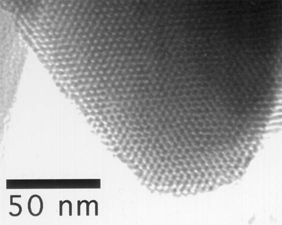
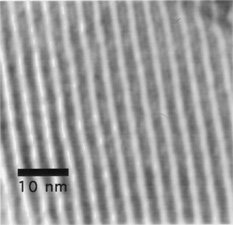 MCM 41 is a "mesoporous molecular sieve" silica nanomaterial with a hexagonal or "honeycomb" arrangement of its straight cylindrical pores (courtesy of Thomas Pauly, Michigan State University)
MCM 41 is a "mesoporous molecular sieve" silica nanomaterial with a hexagonal or "honeycomb" arrangement of its straight cylindrical pores (courtesy of Thomas Pauly, Michigan State University)
1993
Moungi Bawendi (MIT) developed synthesis methods to produce quantum dots of specific sizes, which was necessary for their commercial applications.
1993
The National Nanofabrication Users Network (NNUN) was established by the U.S. National Science Foundation to provide users from academia, government, and industry with access to sophisticated nanofabrication technologies.
1993
Moungi Bawendi of MIT invented a method for controlled synthesis of nanocrystals (quantum dots), paving the way for applications ranging from computing to biology to high-efficiency photovoltaics and lighting. Other researchers such as Louis Brus and Chris Murray also contributed methods for synthesizing quantum dots.
1997
Researchers at Cornell University made the world's smallest guitar out of crystalline silicon. No larger than a single cell, this "nanoguitar" was 10 micrometers long, with six strings each about 50 nanometers, or 100 atoms, wide.
1998
The Interagency Working Group on Nanotechnology (IWGN) was formed under the National Science and Technology Council to investigate the state of the art in nanoscale science and technology and to forecast possible future developments. Their report, Nanotechnology Research Directions: Vision for the Next Decade (1999), defined the vision for and led directly to the formation of the U.S. National Nanotechnology Initiative in 2000.
1999
Cornell University researchers Wilson Ho and Hyojune Lee probed secrets of chemical bonding by assembling a molecule (iron carbonyl Fe(CO)2) from constituent components iron (Fe) and carbon monoxide (CO) with a scanning tunneling microscope.
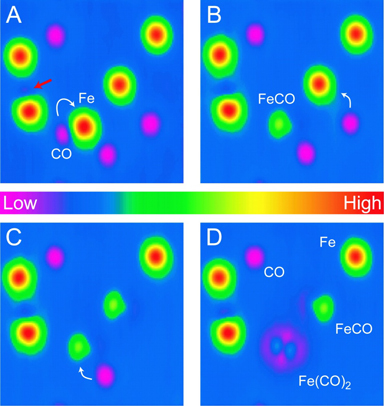 The progression of steps using a scanning tunneling microscope tip to "assemble" an iron carbonyl molecule (courtesy, Wilson Ho, Science 285, 1719 (1999))
The progression of steps using a scanning tunneling microscope tip to "assemble" an iron carbonyl molecule (courtesy, Wilson Ho, Science 285, 1719 (1999))
1999
Chad Mirkin at Northwestern University invented dip-pen nanolithography (DPN®), leading to manufacturable, reproducible "writing" of electronic circuits as well as patterning of biomaterials for cell biology research, nanoencryption, and other applications.
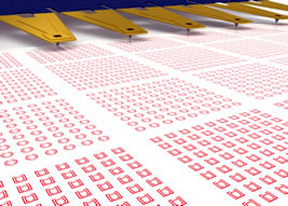 Use of DPN to deposit biomaterials (©2010 Nanoink)
Use of DPN to deposit biomaterials (©2010 Nanoink)
1999–early 2000s
Consumer products making use of nanotechnology began appearing in the marketplace, including lightweight nanotechnology-enabled automobile bumpers that resist denting and scratching, golf balls that fly straighter, tennis rackets that are stiffer, baseball bats with better flex and "kick," nano-silver antibacterial socks, clear sunscreens, wrinkle- and stain-resistant clothing, deep-penetrating therapeutic cosmetics, scratch-resistant glass coatings, faster-recharging batteries for cordless electric tools, and improved displays for televisions, cell phones, and digital cameras.
2000
President Clinton launched the National Nanotechnology Initiative (NNI) to coordinate Federal R&D efforts and promote U.S. competitiveness in nanotechnology. Congress funded the NNI for the first time in FY2001. The NSET Subcommittee of the NSTC was designated as the interagency group responsible for coordinating the NNI.
2001
Initial demonstration of superconducting nanowire single-photon detectors (SNSPDs) by scientists at Moscow State Pedagogical University and the University of Rochester. The scientists showed that single photons could generate resistive hotspots in ultrathin superconducting nanowires made of niobium nitride.
2003
Congress enacted the 21st Century Nanotechnology Research and Development Act (P.L. 108-153). The act provided a statutory foundation for the NNI, established programs, assigned agency responsibilities, authorized funding levels, and promoted research to address key issues.
2003
Naomi Halas, Jennifer West, Rebekah Drezek, and Renata Pasqualini at Rice University developed gold nanoshells, which when “tuned” in size to absorb near-infrared light, serve as a platform for the integrated discovery, diagnosis, and treatment of breast cancer without invasive biopsies, surgery, or systemically destructive radiation or chemotherapy.
 Computer simulation of growth of gold nanoshell with silica core and outer layer of gold (courtesy H. Halas, Gianna News Network, 2003)
Computer simulation of growth of gold nanoshell with silica core and outer layer of gold (courtesy H. Halas, Gianna News Network, 2003)
2004
In collaboration with the U.S. Food and Drug Administration and the National Institute of Standards and Technology, the National Cancer Institute (which is a part of the National Institutes of Health) launched the Nanotechnology Characterization Laboratory to advance cancer nanotechnology and expedite the development of promising nanomedicines.
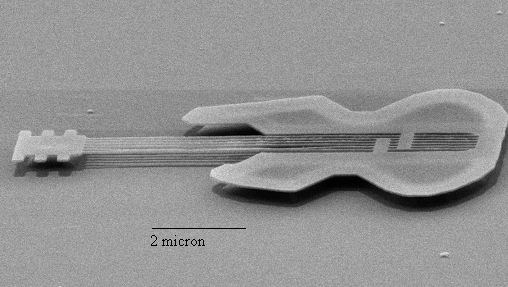 Photo by D. Carr and H. Craighead, Cornell University
Photo by D. Carr and H. Craighead, Cornell University
2004
The NNI released its first Strategic Plan, which stated that “[the] vision of the National Nanotechnology Initiative (NNI) is a future in which the ability to understand and control matter on the nanoscale leads to a revolution in technology and industry. Toward this vision, the NNI will expedite the discovery, development, and deployment of nanotechnology in order to achieve responsible and sustainable economic benefits, to enhance the quality of life, and to promote national security.”
2004
Graphene, a single-atom-thick sheet of carbon atoms, was isolated and identified for the first time by Andre Geim and Konstantin Novoselov, both at the University of Manchester, United Kingdom, by repeatedly peeling layers from graphite using Scotch tape. Their work led to the 2010 Nobel Prize in Physics.
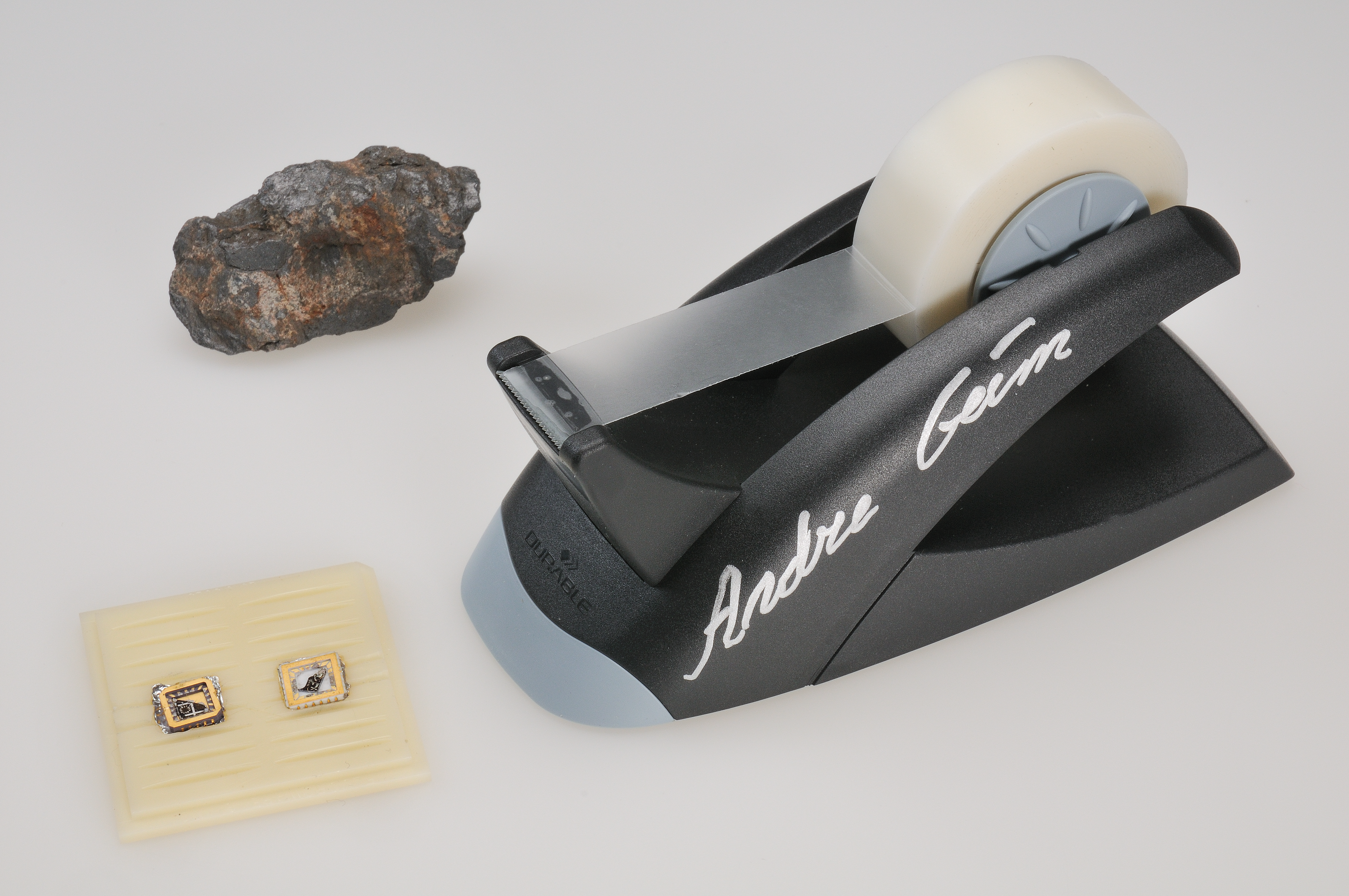 Credit: Gabriel Hildebrand - Nobelmuseet
Credit: Gabriel Hildebrand - Nobelmuseet
2004
The National Nanotechnology Infrastructure Network (NNIN) was established by the U.S. National Science Foundation as a network of user facilities to support research and education in nanoscale science, engineering, and technology. The NNIN was led by Cornell University.
2005
Erik Winfree and Paul Rothemund from the California Institute of Technology developed theories for DNA-based computation and "algorithmic self-assembly" in which computations are embedded in the process of nanocrystal growth.
2006
James Tour and colleagues at Rice University built a nanoscale car made of oligo(phenylene ethynylene) with alkynyl axles and four spherical C60 fullerene (buckyball) wheels. Increases in temperature caused the nanocar to move about on a gold surface as a result of buckyball wheels turning, as in a conventional car.
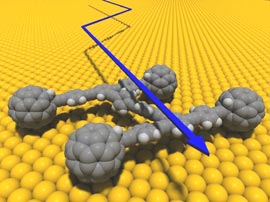 Nanocar with turning buckyball wheels (credit: RSC, 29 March 2006)
Nanocar with turning buckyball wheels (credit: RSC, 29 March 2006)
2007
The National Institute of Standards and Technology (NIST) established the NIST Center for Nanoscale Science and Technology to accelerate innovation in nanotechnology-based commerce.
2007–2008
The five Nanoscale Science Research Centers (NSRCs), user facilities established by the U.S. Department of Energy, began full operation. These centers have been open to the scientific community to perform and collaborate on nanoscience research.
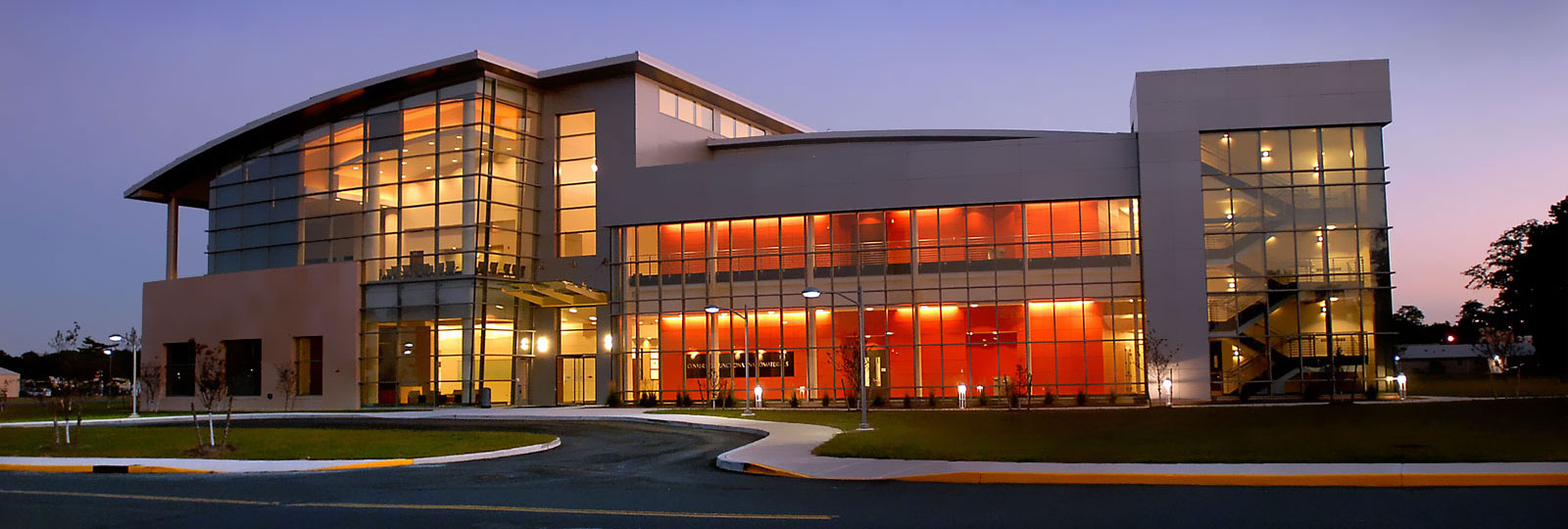 Credit: Center for Functional Nanomaterials/Brookhaven National Laboratory
Credit: Center for Functional Nanomaterials/Brookhaven National Laboratory
2009–2010
Nadrian Seeman and colleagues at New York University created several DNA-like robotic nanoscale assembly devices. One is a process for creating 3D DNA structures using synthetic sequences of DNA crystals that can be programmed to self-assemble using “sticky ends” and placement in a set order and orientation. Seeman shared the 2010 Kavli Prize in Nanoscience for this work.
2010
IBM used a silicon tip measuring only a few nanometers at its apex to chisel away material from a substrate and create a complete nanoscale 3D relief map of the world, one-one thousandth the size of a grain of salt. This activity demonstrated a powerful patterning methodology for generating nanoscale patterns and structures as small as 15 nanometers at greatly reduced cost and complexity.
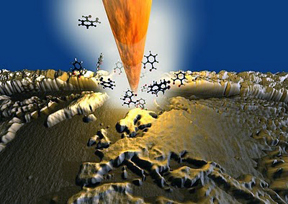 A rendered image of a nanoscale silicon tip chiseling out the smallest relief map of the world from a substrate of organic molecular glass (courtesy of Advanced Materials)
A rendered image of a nanoscale silicon tip chiseling out the smallest relief map of the world from a substrate of organic molecular glass (courtesy of Advanced Materials)
2011
MXenes, a family of two-dimensional layered materials composed of transition metal carbides, nitrides, and carbonitrides, were discovered for the first time by a team of researchers at Drexel University led by Yury Gogotsi and Michel Barsoum. They have a unique combination of properties, including high electrical conductivity, hydrophilicity, large surface area, and tunability, which make them promising for energy storage applications, water purification, gas sensors, and triboelectric nanogenerators. MXene: A Star is Born.
2012
George Church of Harvard University and colleagues published the first scientific article on DNA data storage: Next-Generation Digital Information Storage in DNA.
2015
The National Nanotechnology Coordinated Infrastructure (NNCI) was established by the U.S. National Science Foundation as the successor to the National Nanotechnology Infrastructure Network (NNIN). NNCI is comprised of 16 user facility sites, their affiliated partners, and a coordinating office at Georgia Tech.
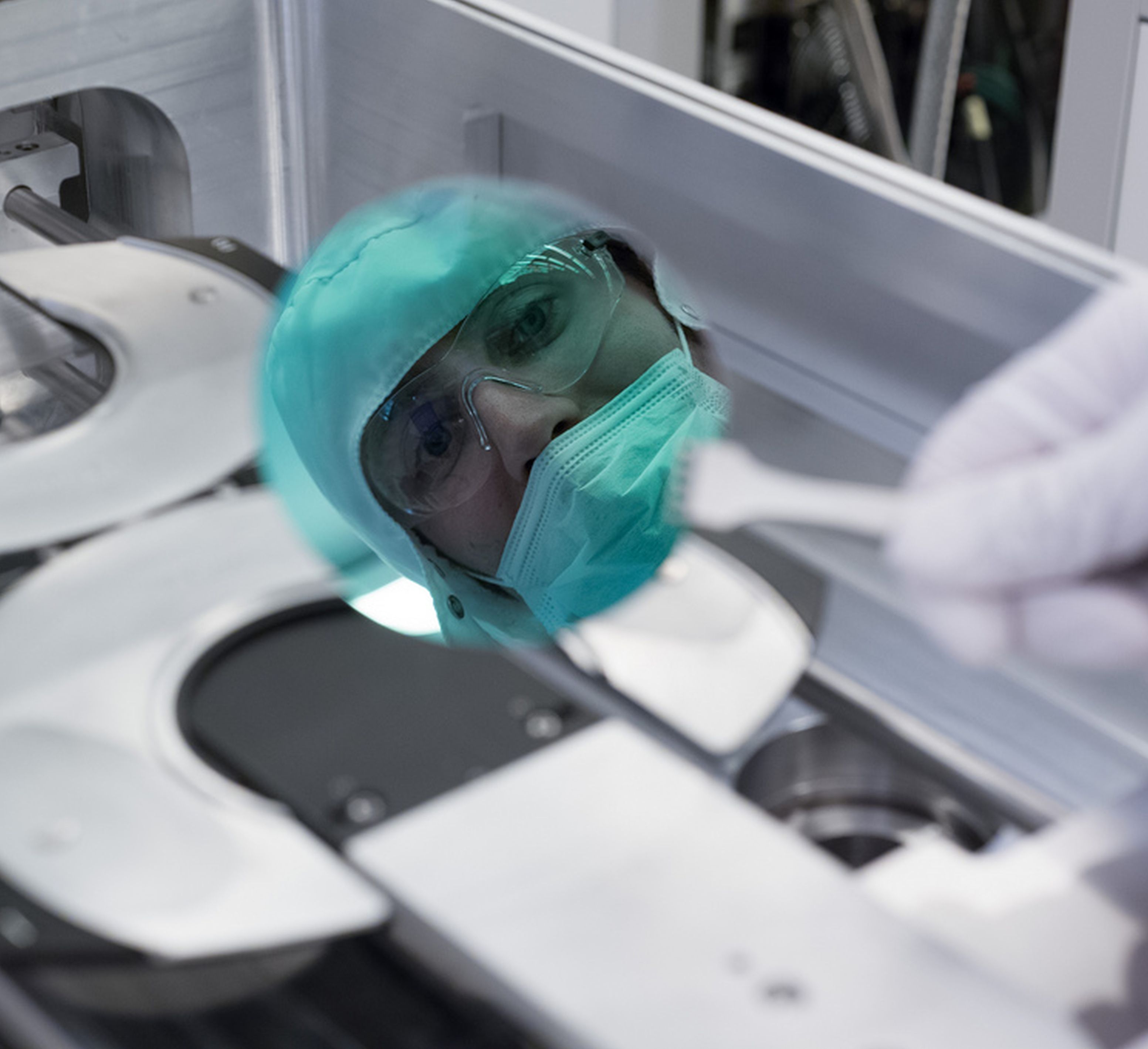 Credit: Institute for Electronics and Nanotechnology/Georgia Institute of Technology
Credit: Institute for Electronics and Nanotechnology/Georgia Institute of Technology
2016
Sir J. Fraser Stoddart, Jean-Pierre Sauvage, and Bernard L. Feringa won the 2016 Nobel Prize in Chemistry for their design and production of molecular machines, which are made by linking molecules together.
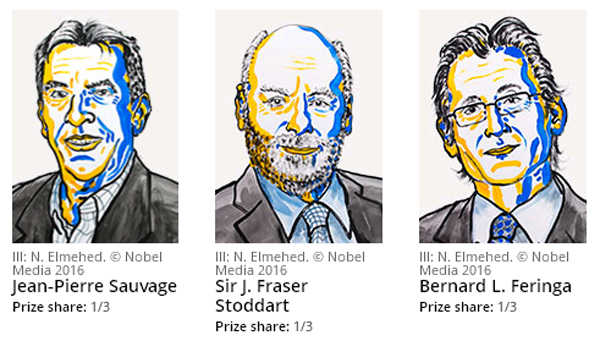 Copyright Nobel Media 2016
Copyright Nobel Media 2016
2016
Researchers at Harvard University demonstrated the first planar lens that works with high efficiency within the visible light spectrum. The lens, called a metalens, consists of titanium dioxide nanostructures on a glass substrate. Metalens works in the visible spectrum, sees smaller than a wavelength of light
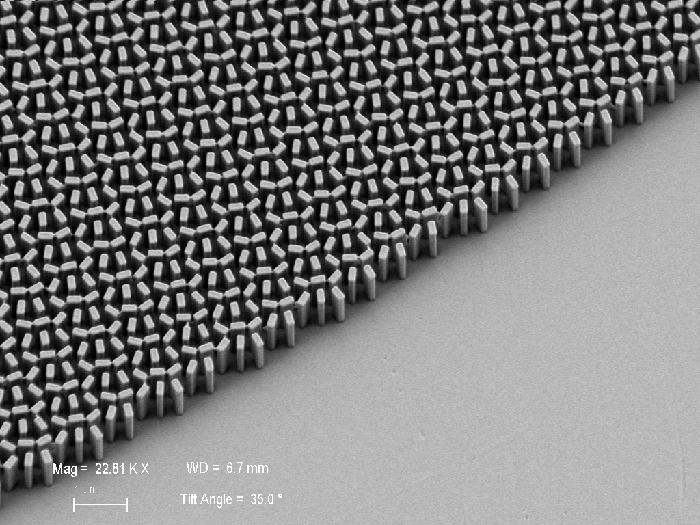 Image courtesy of the Capasso Lab at Harvard University
Image courtesy of the Capasso Lab at Harvard University
2016
Scientists at the Connecticut Agricultural Experiment Station in New Haven, CT, conducted experiments to stimulate plant immunity to fight fungal infections by supplying nanoscale particles of essential micronutrients, such as copper, zinc, and manganese. (See the following story for additional details: In Connecticut, a Nanoscale Agricultural Experiment With Global Potential.) In 2024, the scientists launched a company, Convergent Bio, whose mission is to “create new sustainable, clean agriculture systems which transform our food supply to be better, cleaner and healthier for people and the planet."
2016
A research team led by Berkeley Lab created a transistor with a working 1-nanometer gate, breaking the size barrier set by the laws of physics. Smallest. Transistor. Ever.
2018
The U.S. Food and Drug Administration approved Patisiran (ONPATTRO), a lipid nanoparticle small interfering RNA therapeutic for the treatment of amyloidosis, a group of diseases characterized by the abnormal buildup of amyloid proteins in various tissues and organs.
2018
The magic-angle twisted bilayer graphene was discovered by a team led by Pablo Jarillo-Herrero at MIT. The team showed that when two graphene sheets are stacked on top of each other at the “magic” angle of 1.1 degrees, the material exhibits unique properties, including superconductivity. Insulator or superconductor? Physicists find graphene is both.
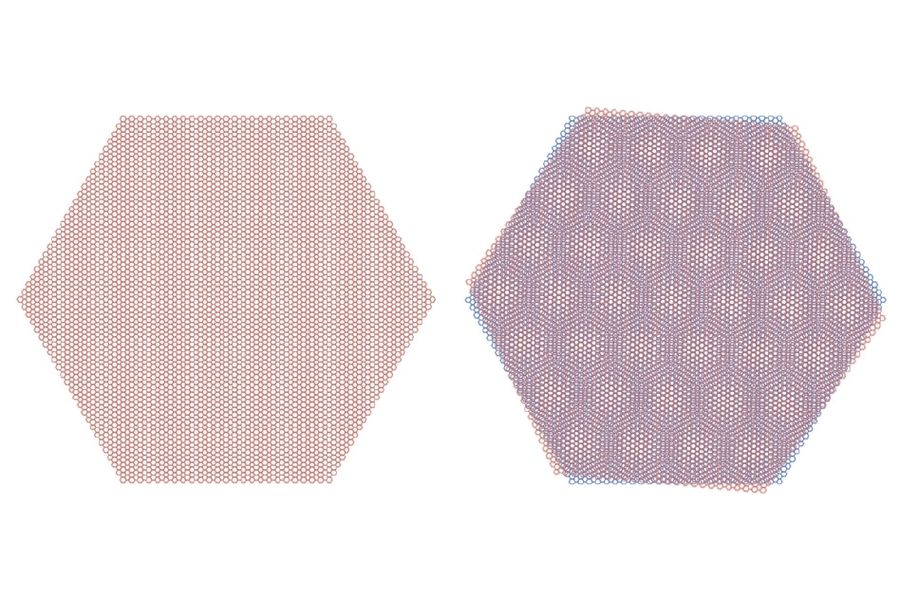 Credit: Pablo Jarillo-Herrero and his research team at MIT
Credit: Pablo Jarillo-Herrero and his research team at MIT
2019
Prof. Molly Stevens from Imperial College of London and Prof. Sangeeta Bhatia from MIT developed a novel diagnostic tool that changes color in the presence of cancer, using nanosensors attached to gold nanoclusters. Colour-change urine test for cancer shows potential in mouse study.
2020
Scientists at Rice University introduced a new process that can turn bulk quantities of just about any carbon source into graphene flakes. Called the "flash graphene" technique, it can convert coal, food waste, or plastic into graphene for a fraction of the cost used by other bulk graphene-producing methods. Rice lab turns trash into valuable graphene in a flash
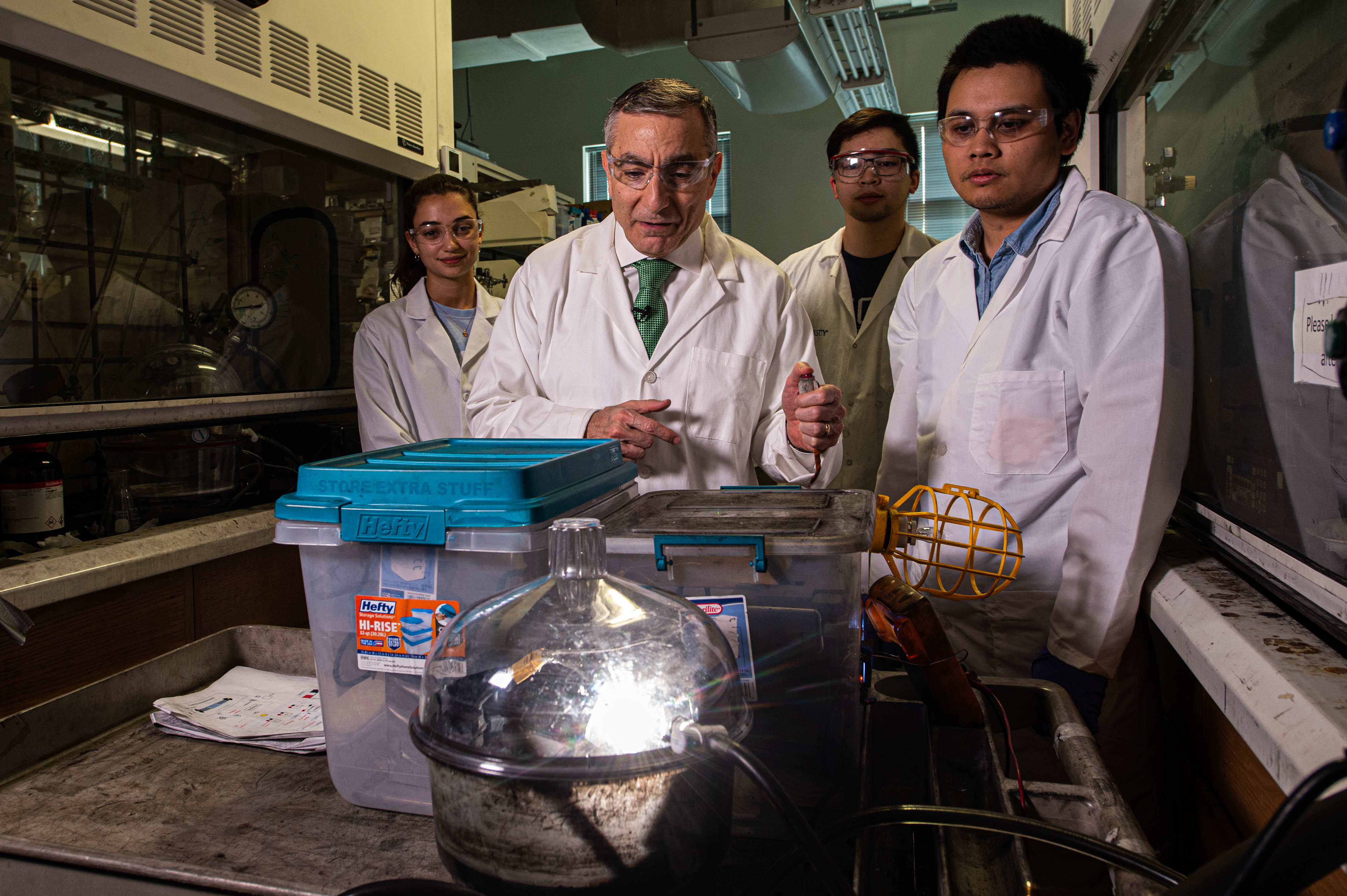 Photo by Jeff Fitlow; Rice University
Photo by Jeff Fitlow; Rice University
2020
Lipid nanoparticle-based mRNA vaccines against COVID-19 were produced by Moderna and Pfizer–BioNTech and then approved in the United States under emergency use authorization by the U.S. Food and Drug Administration.
2020
MIT researchers demonstrated that carbon nanotube field-effect transistors can be fabricated into circuits more efficiently, accelerating potential commercial adoption. Carbon nanotube transistors make the leap from lab to factory floor.
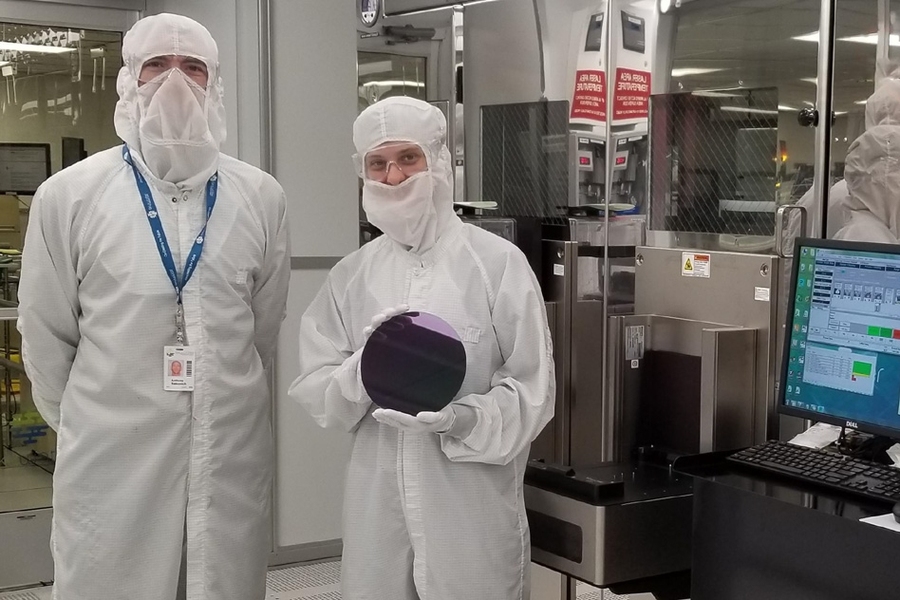 Credit: Max Shulaker and Mindy Bishop / MIT
Credit: Max Shulaker and Mindy Bishop / MIT
2021
IBM announced the world’s first 2-nanometer chip technology, opening new horizons for faster, more efficient semiconductors.
2023
Researchers from the National Institute of Standards and Technology and NASA’s Jet Propulsion Laboratory built a superconducting camera containing 400,000 pixels—400 times more than any other device of its type. NIST Team Develops Highest-Resolution Single-Photon Superconducting Camera.
 Credit: S. Kelley / National Institute of Standards and Technology
Credit: S. Kelley / National Institute of Standards and Technology
2023
Moungi G. Bawendi (MIT), Louis E. Brus (Columbia University), and Alexei I. Ekimov (Nanocrystals Technology Inc.) were awarded the 2023 Nobel Prize in Chemistry for the discovery and synthesis of nanoparticles called quantum dots. They planted an important seed for nanotechnology.
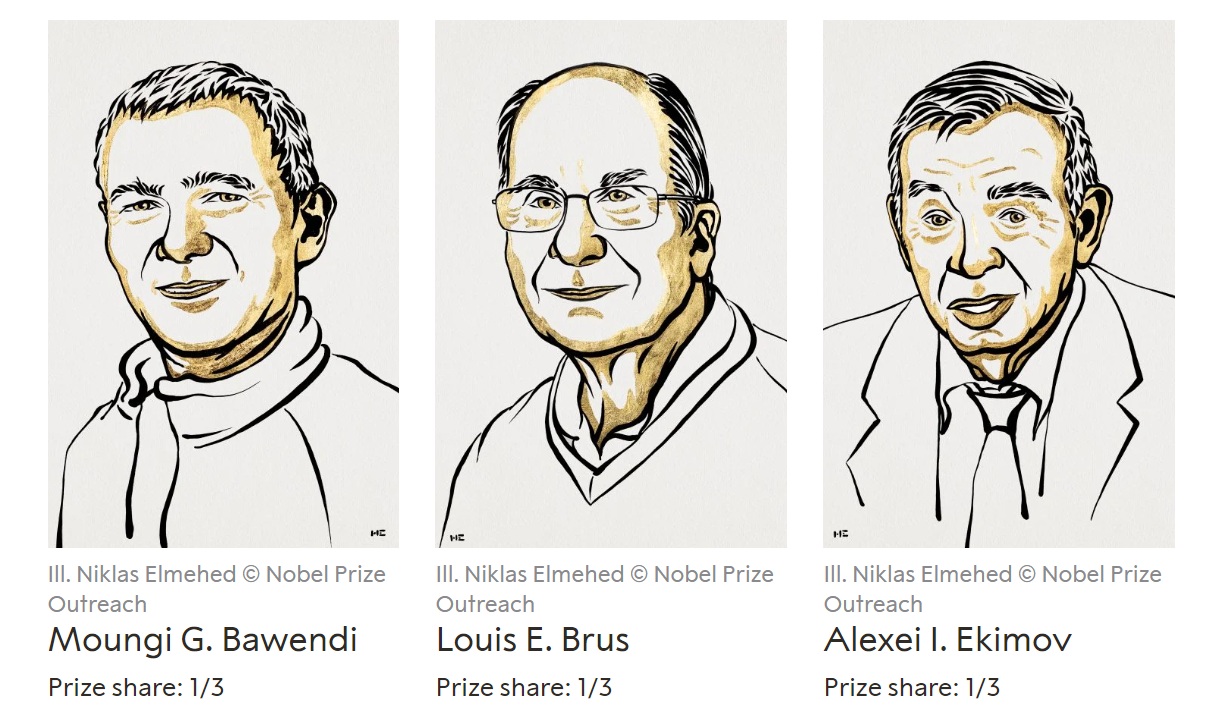 Chemistry Nobel Prize Winners [Copyright Nobel Prize Outreach]
Chemistry Nobel Prize Winners [Copyright Nobel Prize Outreach]
2023
Katalin Kariko and Drew Weissman win Nobel Prize in Physiology or Medicine "for their discoveries concerning nucleoside base modifications," which led to the development of lipid nanoparticle-based mRNA vaccines against COVID-19. Katalin Karikó and Drew Weissman, Penn’s Historic mRNA Vaccine Research Team, Win 2023 Nobel Prize in Medicine
 Drew Weissman Katalin Kariko [Photo Credit: Peggy Peterson Photography for Penn Medicine]
Drew Weissman Katalin Kariko [Photo Credit: Peggy Peterson Photography for Penn Medicine]
2023
YouTuber Mark Rober posted a 21-minute video, World's Smallest Nerf Gun Shoots an Ant, in which he and various scientists create Nerf guns that are smaller and smaller in size – including a Nerf gun made with carbon nanotubes and another made with DNA.
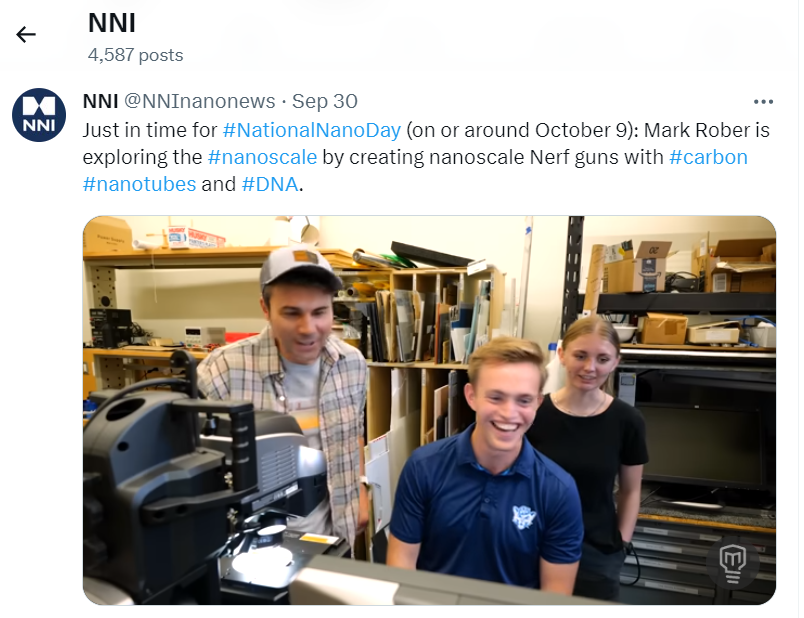 YouTuber Mark Rober
YouTuber Mark Rober
2024
Using a pair of sensors made from carbon nanotubes, researchers from MIT, the Singapore-MIT Alliance for Research and Technology, and the National University of Singapore discovered signals that reveal when plants are experiencing stresses, such as heat, light, or attack from insects or bacteria. Farmers could use these sensors to monitor potential threats to their crops. Plant sensors could act as an early warning system for farmers
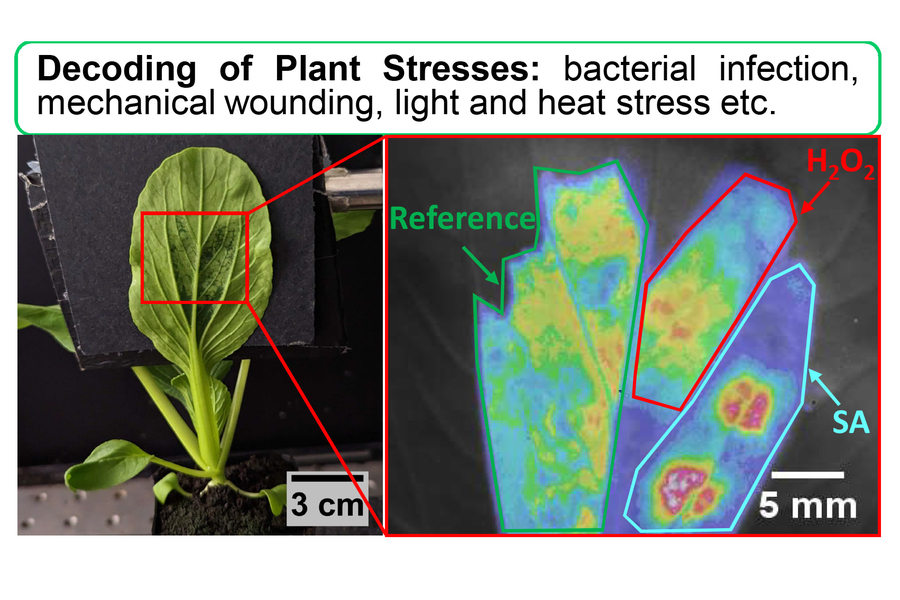 Courtesy of the Lab of Michael Strano at MIT
Courtesy of the Lab of Michael Strano at MIT
2024
Researchers from North Carolina State University and Johns Hopkins University have demonstrated a technology that can perform data storage and computing functions – repeatedly storing, retrieving, computing, erasing or rewriting data – by using DNA rather than conventional electronics. Previous DNA data storage and computing technologies could complete some but not all of these tasks. For first time, DNA tech offers both data storage and computing functions
2025
Researchers at MIT have created a faster and more efficient way to manufacture nanoparticles that deliver cancer drugs directly to tumors by using a device that streamlines the process and meets industry safety standards. This new method can produce about 50 doses in just a few minutes. MIT engineers develop a way to mass manufacture nanoparticles that deliver cancer drugs directly to tumors
 Credit: Gretchen Ertl
Credit: Gretchen Ertl


